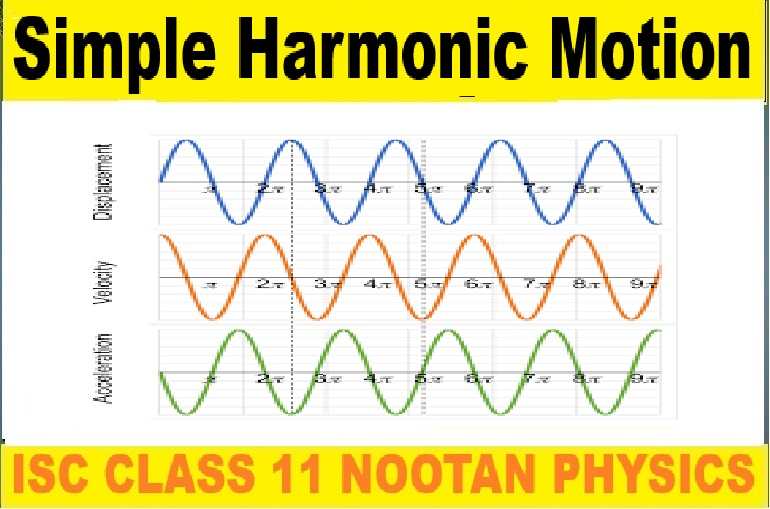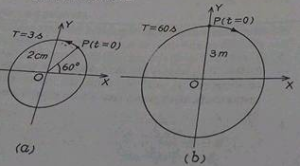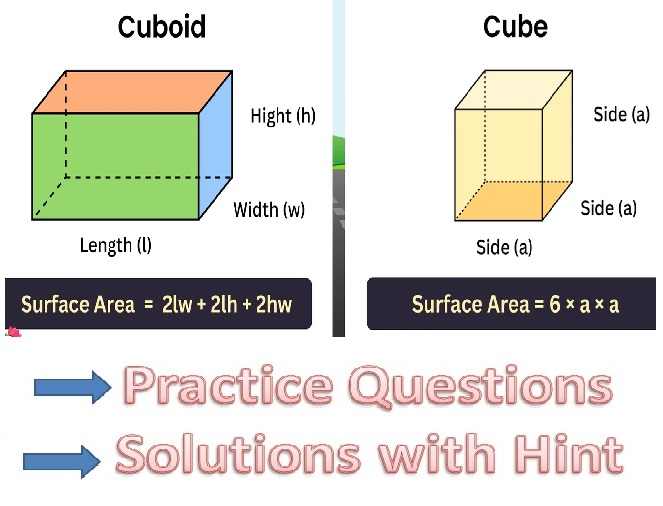Displacement Velocity Acceleration and Time Period of SHM Numerical Class-11 Nootan ISC Physics Ch-23 Simple Harmonic Motion. Step by step solutions of Kumar and Mittal Physics of Nageen Prakashan as council latest prescribe guideline for upcoming exam. Visit official Website CISCE for detail information about ISC Board Class-11 Physics.

Displacement Velocity Acceleration and Time Period of SHM Numerical Class-11 Nootan ISC Physics
| Board | ISC |
| Class | 11 |
| Subject | Physics |
| Book | Nootan |
| Chapter-23 | Simple Harmonic Motion. |
| Topics | Numericals on Displacement Velocity Acceleration and Time Period of SHM |
| Academic Session | 2025-2026 |
Numericals on Displacement Velocity Acceleration and Time Period of SHM
Q-1. From the figures below, obtain the SHM’s of the Y-projection of the radius vector of the revolving particle in each case.

Ans: (a) amplitude a = 2 cm t = 3 s
ω = 2 π / T = 2 π / 3
θ = π / 3
equation is y = a sin (ωt + θ)
=> y = a sin (2 π t / 3 + π / 3) answer is wrong
(b) a = 3 cm T = 60 s
ω = 2 π / T = π / 30
θ = π / 2
eq. is y = a sin (π / 2 – 2 π t / 60)
{(π / 2 – 2 π t / 60) is used as motion in clockwise}
∴ y = 3 cos (π t / 30) m
Q-2. The time (t) and displacement (y) relation of a particle executing SHM is given by the equation y = 0.50 sin (500 t +0.5), where distance is in cm and time in seconds. Calculate the values of amplitude, angular frequency, frequency and initial phase of the particle.
Ans-: Given equation = y = 0.50 sin (500 t + 0.5)
comparing it with y = a sin (ω t + θ)
we have
angular frequency ω = 500 rad / s
frequency f = ω / 2 π = (500 / 2 π) Hz
amplitude = 0.50 cm
and initial phase = 0.5
Q-3. The displacement of a particle executing simple harmonic motion is given by equation y = 0.3 sin 20 π (t + 0.05) , where time t is in second and displacement y is in metre. Calculate the values of amplitude, time-period, initial phase and initial displacement of the particle.
Ans: Given equation y = 0.3 sin 20 π (t + 0.05)
comparing it with y = a sin (ω t + θ)
we have amplitude = 0.3 m
ω = 20 π
frequency = ω / 2 π = 20 π / 2 π = 10
Time period = 1 / f = 0.1 s
Initial phase = 20 π x 0.05 = π
and initial displacement at t = 0
y = 0.3 sin 20 π (0 + 0.05)
=> y = 0.3 sin π = 0
Q-4. A body of mass 0.1 kg is executing simple harmonic motion according to the equation x = 0.5 cos (100 t + 3 π / 4) Find metre. Find : (i) the frequency of oscillation, (ii) initial phase, (iii) maximum velocity, (iv) maximum acceleration, (v) total energy.
Ans: Given eq. x = 0.5 cos (100 t + 3 π / 4)
comparing it with x = a cos (ω t + θ)
ω = 100
f = ω / 2 π = 100 / 2 π = (50 / π) Hz
Initial phase = θ = (3 π / 4)
velocity = dx / dt = – 0.5 x 100 sin (100 t + 3 π / 4)
=> (v)max = 0.5 x 100 = 50 m / s
when sin (100 t + 3 π / 4) = 1
acc = dv / dt = – 0.5 x 100 x 100 cos (100 t + 3 π / 4)
=> (acc)max = 0.5 x 100 x 100 = 5000 m / s²
Total energy = 1/2 m ω² a²
=> 1/2 x 0.1 x 100² x (0.5 x 10^-2)² = 125 J
Q-5. A particle executes simple harmonic motion represented by the equation 10 y = 0.1 sin 50 π t, where the displacement y is in metre and the time t is in second. Find the amplitude and frequency of the particle.
Ans: given equation = 10 y = 0.1 sin 50 π t
=> y = 0.01 sin 50 π t
Comparing it with eq. y = a sin ω t
amplitude a = 0.01 m
ω = 50 π
f = ω / 2 π = 50 π / 2 π = 25 Hz
Q-6. The period of a simple pendulum is 2 s and the amplitude of vibration is 5 cm. Write down the equation of its motion. What will be the displacement and the velocity of the particle after 1.5 s of the start of motion? Assume that the particle starts moving from its mean position.
Ans: T = 2 s a = 5 cm
eq. => y = a sin ω t
=> y = a sin (2 π / T) t
=> y = 5 sin π t cm
displacement after 1.5 s
=> y = 5 sin 1.5 π
=> 5 sin 3/2 π = – 5 cm
again velocity
v = dy / dt = 5 π cos π t
at t = 1.5 s => v = 5 π cos 3/2 π = 0
Q-7. The time-period of a body executing simple harmonic motion is 0.05 s. If the amplitude is 4 cm then what will be the maximum velocity and maximum acceleration of the body?
Ans: Given T = 0.05 s a = 4 cm
ω = 2 π / T = 2 π / 0.05 = 40 π
now (v)max = a ω = 4 x 10^-2 x 40 π = 1.6 π m /s
and (a)max = ω² a = 1600 π² x 4 x 10^-2 = 64 π² m / s²
Q-8. The acceleration of a particle executing simple harmonic motion is (π²/2) cm s^-2, when its displacement is 2 cm. Compute its time-period.
Ans: Give a = (π² / 2) cm/s² y = 2 cm
a = ω² y => ω² = a / y => ω² = π² / 2 x 2
ω = π / 2 rad/s
T = 2 π / ω = 4 s
Q-9. The maximum velocity of a particle executing simple harmonic motion is 100 cm s^-1 and the maximum acceleration is 157 cm s^-2. Determine the periodic- time.
Ans: (v)max = a ω
=> (α)max = a ω²
=> a ω² / a ω = ω = (α)max / (v)max = 157 / 100 = 1.57 = π / 2
∴ T = 2 π / ω = 2 π / (π / 2) = 4 s
Q-10. On pouring 10 g mercury into a test tube of mass 8 g and external diameter 2 cm, the test tube floats vertically in water. The test tube is pressed down into the water and left. Prove that the motion of the tube will be simple harmonic. Also find its time-period. (Assume the effect of viscosity of water negligible).
Ans: Density of water, ρ = 1000 kg/m³
Area of the cross section of the cylinder, A = πr²
Mass of cylinder, m = [M(mercury) + M(test tube)] = [10 + 8]g = 18g = 0.018 Kg
Here, buoyancy force is equals to restoring force.
While pressing the test tube, suppose it is dipped by a height ‘x’
thus, Restoring force = – (x*A) * p*g / volume
=>a = f / m – A * p * g * x / m
But A p g / m is constant. thus,
=> -α ∝ -x
Therefore, the motion of the tube is simple harmonic.
=> – A * p * g * x / m = -ω² x
w = √π * r² * ρ * g / m
=> √3.14 * 0.01 * 0.01 * 1000 * 9.8 / 0.018
=> √170.96
=> 13.08 rad/sec
Time Period T = 2 π / ω
=> 2 * 3.14 / 13.08 = 0.48 s (approx.)
— : End of Displacement Velocity Acceleration and Time Period of SHM Numerical Class-11 Nootan ISC Physics Ch-23.. :–
Return to : – – Nootan Solutions for ISC Physics Class-11
Thanks
Please share with your friends


